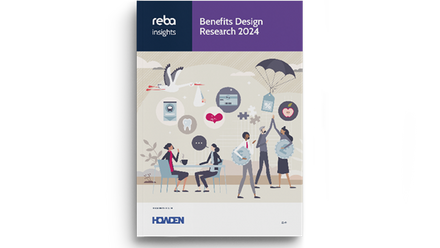How to identify which benefits will really retain talent in your organisation

High employee turnover directly affects your bottom line, as replacing lost talent is expensive, time-consuming and has a negative impact on workplace productivity. After all, if your staff are having to take on additional work to bridge the gap until new employees start, the quality of work is likely to be poorer, and the added stress will cause workplace morale to decrease. With one in three people saying that poor managerial support is preventing them from thriving at work – according to a Twitter Poll we ran in July 2018 – it could be time to look objectively at wellbeing in your workplace.
What employees actually want
There’s been a trend in recent years for ‘fun’ perks, ranging from ball pits to in-house bars – these may grab the attention of prospective employees, but will they really keep them on board? There can be a huge discrepancy between what you think your employees want, and what they actually want.
The way to find what your employees want is simple – just ask. Surprisingly, the UK Benefits Trends Survey (2017) found that only 62 per cent of employers look at the specific needs of their workforce when designing benefits programmes. However, it’s important to recognise that every workforce is different, so their requirements will also be different. Good communication is known to increase productivity in the workplace and foster positive relationships between employers and employees – and employee satisfaction is key to retention.
There are many ways to open the lines of communication with your employees. One-on-one meetings mean you can get to know each employee individually and find out what motivates them – if you’re offering what they actually want, the chances are they’ll be happier to go that extra mile at work. It’s also good for morale, as it will give your employees a boost knowing that their contributions matter. Similarly, open meetings are a simple way to give your employees a platform to share their thoughts, and can also be used as an opportunity to celebrate recent successes and offer praise, letting your employees know that they are appreciated. Employee surveys, suggestion boxes and online portals are simple but effective ways to find out more about what they value in the workplace.
Investing in employees’ careers
The Job Exodus Trends (2018) survey revealed that one in five workers are unhappy because they feel they have a lack of training or development opportunities. If this is the case in your workplace, you should develop a career strategy for each employee to set objectives and targets for them to reach – once you know what their specific goals are, you can offer them external or online courses to help develop their skills in their desired area. If an employee feels as if their future is being invested in, they are less likely to leave.
The same survey also revealed that almost a third of employees struggle with the hours they work, so consider offering flexible working and the option to work from home. This can be a particularly attractive benefit to employees with children who may struggle to find regular childcare, but the fact remains that many employees benefit from the additional freedom that defining their own working hours gives them.
Wellness benefits
Wellness schemes have also become increasingly popular in recent years, especially those that are focused on mental health, as poor mental health is the leading cause of sickness absence in the UK, found the How to Support Mental Health at Work (2017) report. Studies have shown that employees are more loyal and productive if their employer is invested in their wellbeing, so benefits such as subsidised gym memberships, access to mindfulness apps and health cash plans are great incentives for employees.
If you’re considering introducing a new employee benefit, find out first if it’s what they really want. That way you’ll know what will keep them happy, motivated – and more likely to stay.
This article was provided by Health Shield.
In partnership with Health Shield
At Health Shield we're passionate about improving people's everyday health.







